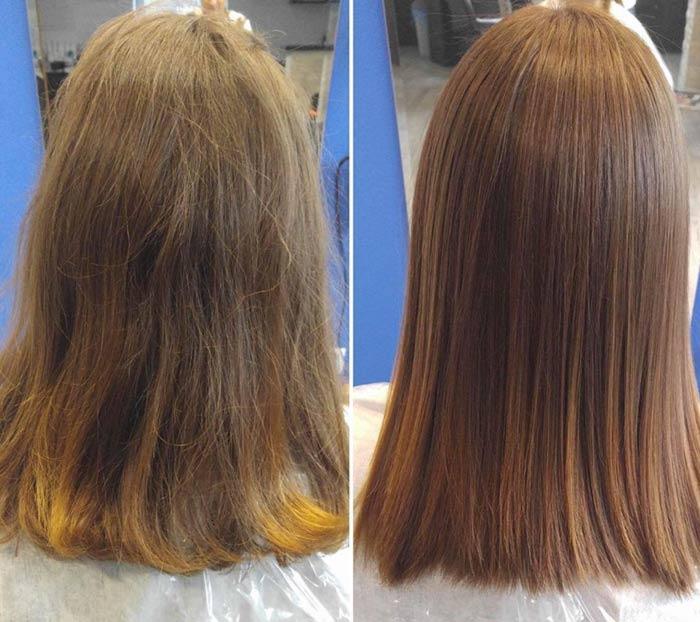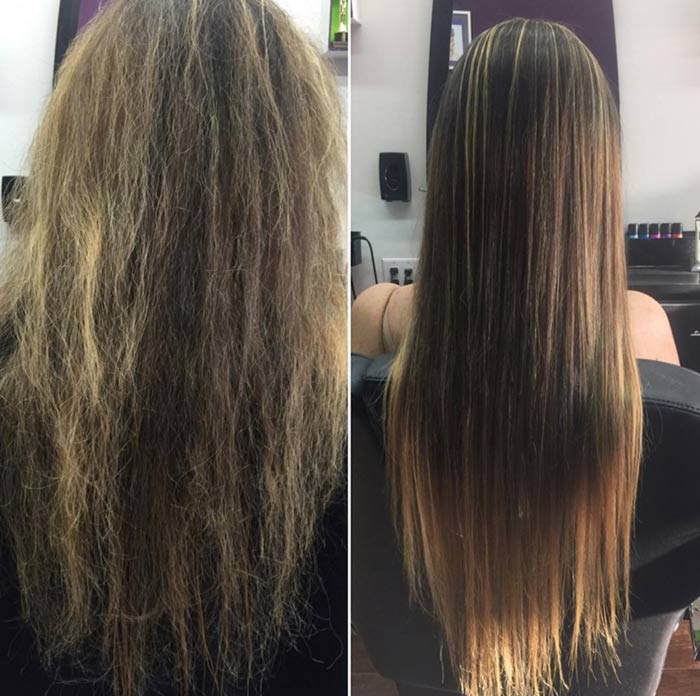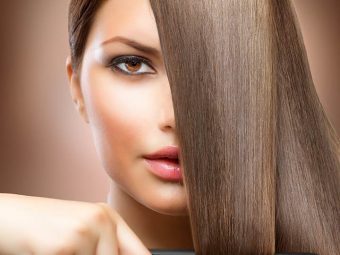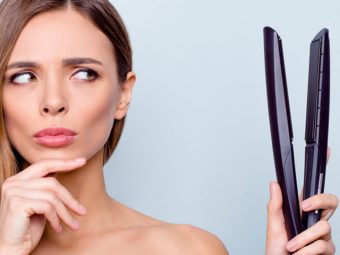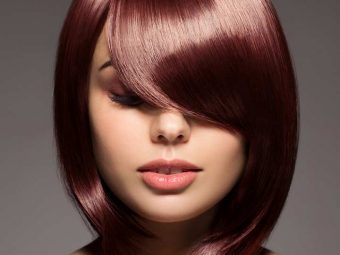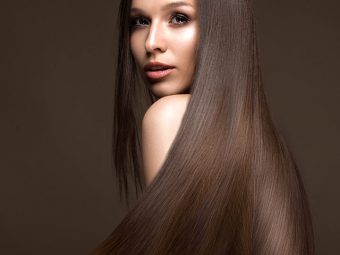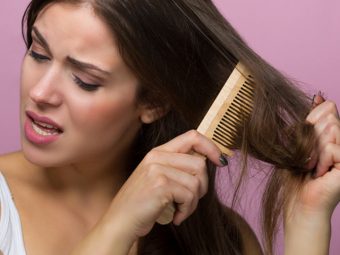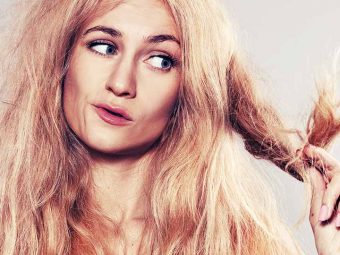Hair Straightening Vs. Hair Smoothing: Differences, Side Effects, And Maintenance Tips
Learn all about both hair treatments to know which of these would suit you best.

Image: Shutterstock
Hair straightening vs. hair smoothening: what is your pick?
Many women prefer straight or silky hair. It has a nice sheen to it and is simple to keep clean. Wavy and curly hair is very lovely, but they require regular attention. Even though a consistent hair care regimen can assist, not all of us have time to nourish the hair with oil sessions and hair treatments. This is why hair smoothing and straightening treatments assist you in changing the structure of your tresses and make them more manageable. Although both treatments give you smoother hair, there is a little variation between them.
Hair straightening originated before hair smoothing. Hair straightening was first performed on African hair. This treatment was created to help those with shaggy hair, but it immediately became fashionable. Hair smoothing, often known as Brazilian keratin treatment or Brazilian blowout, was invented in Brazil in 2003. There is a slew of other distinctions between these two techniques. Continue reading to learn more.
In This Article
What Is Hair Straightening?
There are two types of hair straightening treatments: permanent and temporary. Temporary straightening is done with heat styling tools like hot irons or hot combs. Here, functioning cohesive and adhesive forces work in a highly viscous system to keep the fibers parallel. The straight hair you get as a result of these procedures is temporary. Your hair goes back to its natural texture when you wash it.
Permanent hair straightening is a process by which the structure of your hair is altered to give you pin-straight hair. The chemical relaxersi XLotions or creams that make hair easier to straighten by chemically relaxing the curls. used in this process permanently break the bonds in your hair shaft. Heat is applied to restructure your hair, and more chemicals are used to seal the newly formed bonds. The alkaline agent in the chemical relaxer breaks the keratin bonds in curly/wavy hair to stretch and smoothen them (1).
Hair straightening treatments offer various benefits, including reduced frizz, manageable curls, improved and groomed appearance, easy maintenance and detangling, and less time consumption. It gives your hair a sleek and polished look that many find appealing. It provides versatility, allowing you to experiment with different styles and making daily hair maintenance more manageable.
This study examined hair product usage among African-American women throughout their life course and its correlation with socioeconomic status (SES). Among 1,555 participants, most women reported ever using chemical relaxers/straighteners (89%), with frequency increasing from childhood to adolescence and decreasing in adulthood. Similar patterns were observed for leave-in/leave-on conditioner use. Latent class analysis identified three patterns of adulthood hair product usage, with higher SES associated with more frequent use of multiple product types. These findings highlight the need to consider nuanced patterns of hair product use beyond a simple ever/never classification, as they may vary by SES.
 Trivia
TriviaHow Does It Work?
Alkaline straighteners contain 1–10% sodium hydroxide (lye-relaxer), lithium hydroxide, calcium hydroxide, or a combination of these ingredients. The high pH of these chemicals helps open the cuticle scales and penetrate into the hair fibers. When these chemicals come in contact with the cortexi XThickest layer of a hair strand, located between the cuticle and medulla (outer- and innermost layers of the hair shaft, respectively). , they react with keratin to break and rearrange the disulfide bridgesi XSecure and unbroken bonds that offer rigidity and strength to the hair. to stretch them out, thus giving you straight hair (1).
While this process causes more damage than hair smoothing, it can straighten even the curliest of hair and is permanent. Thus, the treated hair remains straight until your natural hair grows out (1). Permanent hair straightening is also known as ‘Japanese straightening.’
When Can You Choose This Method?
Hair straighteners work on all hair types, from wavy to kinky curly hair. Depending on the hair texture, the procedure will need to be repeated every 8-12 weeks. One important thing to remember is that permanent straightening uses hydroxides or thioglycolate that are incompatible with bleached hair.
Side Effects Of Hair Straightening
- Chemical relaxers should not be applied on the scalp as they can burn your skin. This is why it is recommended to apply some petrolatum along the hairline and on the ears before the application of the relaxer to prevent alkaline burns (1).
- Wrong technique may cause scalp burns and hair breakage (1).
- The swelling of hair fibers and opening of cuticle scales can make the hair susceptible to friction, thus lowering its resistance and strength (1).
- The most commonly reported side effects of permanent hair straightening are: frizzy hair, dandruff, hair loss, thinning and weakening of hair, graying of hair, and split ends (1).
Michelle Govindasamy, a beauty and lifestyle blogger, stopped straightening her hair for 6 months and saw noticeable differences in her hair health. She writes, “…I could hardly spot a split end. I definitely had way less split ends than ever before. I had less hair falling out & breaking off as well which was awesome! My hair was growing much faster than before…. Overall, my hair feels better than ever before. I also like that it is bouncy and not flat (straightening made my hair look really flat). Damage, split ends, and dryness are far less noticeable on my hair now and I am loving it (i).”
What Is Hair Smoothing?
Hair smoothing is a temporary treatment that is considered to be a procedure under hair straightening by some people. This professional treatment improves the manageability and appearance of your hair. The process involves saturating your hair with a formaldehyde solution, followed by drying it out and using a flat iron to lock your hair in a straight position (1). However, the chemicals used for smoothing hair are not as strong as the ones used in hair straightening treatments. This makes this treatment less damaging, but it is not ideal for all hair types.
Hair smoothening treatments help control frizz, add shine and glossy, make it easier to style hair, and improve hair texture. It adds a touch of elegance to your appearance, enhancing your overall confidence. It simplifies daily styling routines, saving time and effort. It gives frizzy hair a temporary smooth look.
Brazilian keratin treatment has become popular because the procedure is compatible with bleached hair and gives the hair a naturally sleek, soft, and glossy feel, which is impossible to acquire with chemical relaxers.
How Does It Work?
First, a formaldehyde solution is applied to the hair. The water in the solution breaks the hydrogen bonds of the keratin molecule. It is then blow-dried straight (a flat iron can also be used). The newly redesigned keratin remains straight because the formaldehyde crosslinks the keratin filamentsi XA class of long chains of proteins that form a network within epithelial cells (cells that cover your body). in perfect alignment. This makes the hair comparatively straighter and shiny (1).
When Can You Choose This Method?
The effects of hair smoothing last between 2 to 5 months. It is primarily recommended for hair that is wavy or frizzy. This is because it does not so much alter the structure of your hair so much as it aligns it. The treatment is not likely to be very effective on hair that is extremely coarse, thick or curly.
Side Effects Of Hair Smoothing
- Earlier, when formaldehyde was used in the Brazilian keratin treatment (BKT), consumers complained of burning eyes, strong smell, and burning mouth and nose. However, the ingredients are not formaldehyde- or glutaraldehyde-based. Formaldehyde-releasers, such as methylene glycol or glyoxylic acid, are used now (1).
- BKT (hair smoothing) uses formaldehyde releasers. Formaldehyde has been associated with reactions, such as eye problems, nervous system problems (for example, headaches and dizziness), respiratory tract problems, nausea, chest pain, vomiting, and rashes (2).
- A study showed that formaldehyde could increase the risk of developing asthma (3).
- The excessive use of heat (flat iron) in hair smoothing can damage your hair (1).
Note: African people’s hair has less volume and density compared to Caucasian people’s hair. Their hair is also more prone to breakage and dryness as their scalp produces lesser sebum. Thus, when they straighten their hair, it can look like they are experiencing hair loss (1).
 Quick Tip
Quick TipWhy Hair Smoothing Over Hair Straightening?
This decision is simply based on the client’s hair type and desired result. Most people want a natural finish without their hair looking pin straight. Hair smoothing, although temporary, serves this purpose with less damage.
The highlight of hair smoothing is that it can be done on bleached, permanently dyed, and relaxed hair. It is also great for improving shine and softness (1).
With hair straightening, the hair bonds need to be broken and then rebuilt. This causes a certain amount of hair damage. While your hair can be repaired, it will need intensive care and regular touch-ups and trims when the natural hair starts to grow back (1).
Why Hair Straightening Over Hair Smoothing?
While frizz can be tamed with hair smoothing, it does not do much for straightening really curly hair. Hair straightening is preferred when dealing with difficult hair types like thick and kinky hair when the client desires straight hair.
While smoothing your hair can transform your curls into frizz-less waves, the chances of it going straight are poor. You are more likely to get the results you desire when you choose to straighten your hair permanently.
Note: Check if you have any chemical allergies, hair loss issues, or any other serious conditions before getting any of these hair treatments. Get a hair test done at a salon. If you experience any discomfort or hair breakage, consult a doctor before you proceed any further.
So, what should you go for?
Hair Smoothing Vs. Hair Straightening – The Final Verdict
Both these procedures have their advantages and setbacks. Both of them have to be done at a salon by trained hairdressers. Remember, both procedures require regular upkeep to maintain the obtained hair texture and structure.
Before making your decision, here are some questions you need to ask yourself:
- Do you want a treatment that is permanent or temporary?
- Do you want pin-straight hair or something that looks more natural?
- Are you just trying to battle frizz or is straight hair the end goal?
These are some of the questions you can ask yourself to decide which treatment is likely the best option for you.
Repeated chemical treatments can damage hair. How can you protect your hair after these procedures? Here’s how!
Hair Maintenance For Smoothened Or Straightened Hair
- Use silicone-based hair care products to rejuvenate your hair. They are known to protect the hair shaft from abrasive actions and increase its thickness (1).
- Avoid using products with artificial colors and fragrances, chemicals, and other harsh ingredients that may affect hair smoothness.
- Massage your hair and scalp with oil (coconut, sunflower, mineral oils). A study has shown that coconut oil can reduce protein loss in damaged hair (4).
- Use a leave-in conditioner and hair masks to hydrate and strengthen your hair.
- Limit the use of heat styling tools on your hair for the first few weeks until your hair regains its moisture and strength.
- Use a wide-toothed comb to achieve tangle-free hair.
Infographic: Major Differences Between Hair Straightening And Smoothing
Hair straightening and hair smoothing are two different hair treatments. But, often, people confuse them and get the wrong one done. To help you out, we have highlighted the key differences between the two treatments that will help you decide which one you want to choose. Check out the infographic below to know more! Illustration: StyleCraze Design Team
Save the high-quality PDF version on your device now.
Download Infographic
To recap, hair smoothing and hair straightening are two hair beauty cosmetic treatments that can help to improve the health and appearance of your hair by smoothening your hair.
In the battle of hair straightening vs. hair smoothing, both are equally matched. Both these treatments use chemicals to break down the bonds in your hair and change its structure. While these chemicals are effective, they may also cause serious side effects like burns and hair breakage. Temporary hair straightening techniques utilize heat styling tools such as flat irons to smoothen the hair, which is a safer alternative to permanent hair straightening and hair smoothing treatments. After undergoing any of these treatments, remember to maintain your hair with effective hair care practices such as oiling your hair regularly.
Frequently Asked Questions
Which is better: keratin treatment, smoothing, or straightening?
All these treatments ensure fine, lustrous, straight hair. However, the end result of each of them varies according to your hair type and your styling requirements. Therefore, you need to consult an expert and consider all your options depending on your specific needs.
Does hair smoothening damage hair?
Yes. Repeated smoothening damages the hair. The chemicals and heat involved in the process attack the hair folliclesi XTube-like structures that surround the roots and strands of hair. and weaken the hair shaft, leading to breakage and hair fall. You may try it 2-3 times a year, but anything more than that will ruin your hair.
Can I tie my hair after 3 days of smoothening?
Yes. You may tie your hair 3-4 days after smoothening. Until then, leave your hair untied to prevent dents in your hair. Do not let water touch it, and be careful while sleeping.
Can I use normal shampoo after smoothening?
No. You may use a sulfate-free shampoo to wash your hair 3-4 days after smoothening.
Can we apply curd on smoothened hair?
Yes. You can apply curd and other natural hair masks on smoothened hair.
Key Takeaways
- Hair straightening and smoothening are styling techniques that tame the hair and make it frizz-free.
- Hair straightening is permanent but has downsides like thinning of hair and breakage.
- Hair smoothing is a temporary treatment, but the formaldehyde solution used may cause eye problems or chest pain.
- To maintain your hair after smoothening or straightening, use silicon-based hair products and limit the usage of heating tools.
Discover the wonders of permanent hair straightening in this informative video. Explore the process, benefits, and considerations to achieve sleek, straight hair that lasts. Unleash your true hair potential!
Personal Experience: Source
i. I stopped straightening my hair & here’s what happened
https://beautynthebronzer.wordpress.com/2018/08/03/i-stopped-straightening-my-hair-heres-what-happened/
Sources
Articles on StyleCraze are backed by verified information from peer-reviewed and academic research papers, reputed organizations, research institutions, and medical associations to ensure accuracy and relevance. Check out our editorial policy for further details.
- Hair Cosmetics: An Overview, International Journal Of Trichology, US National Library Of Medicine, National Institutes of Health.
https://www.ncbi.nlm.nih.gov/pmc/articles/PMC4387693/ - Hair smoothing treatments: Perceptions and wrong practices among females in Saudi Arabia, Journal Of Dermatology And Dermatologic Surgery.
https://www.jddsjournal.org/article.asp?issn=2352-2410;year=2019;volume=23;issue=1;spage=20;epage=23;aulast=Algarni - Asthma From Hair Straightening Treatment Containing Formaldehyde: Two Cases And A Review Of The Literature, Toxicology And Industrial Health, US National Library Of Medicine, National Institutes of Health.
https://www.ncbi.nlm.nih.gov/pubmed/29554820 - Effect of mineral oil, sunflower oil, and coconut oil on prevention of hair damage, Journal of Cosmetic Science, US National Library Of Medicine, National Institutes of Health.
https://www.ncbi.nlm.nih.gov/pubmed/12715094/





